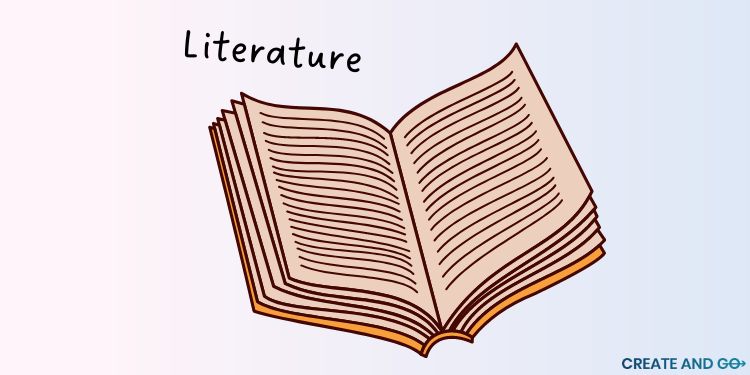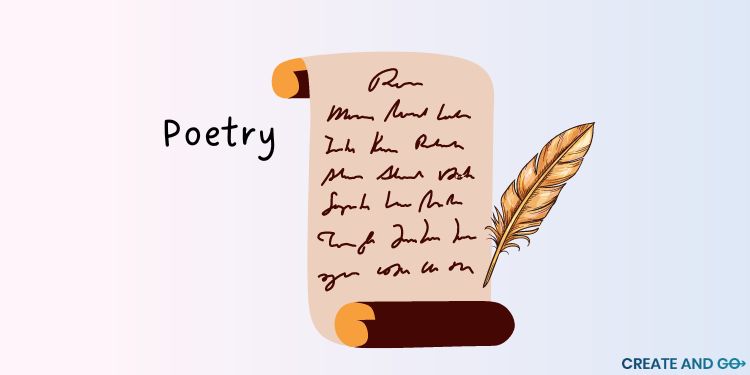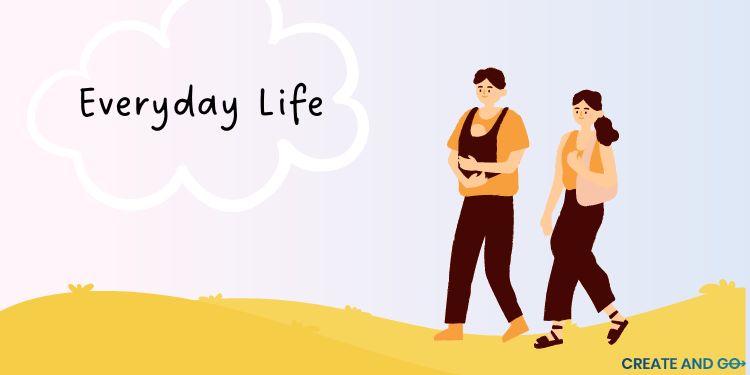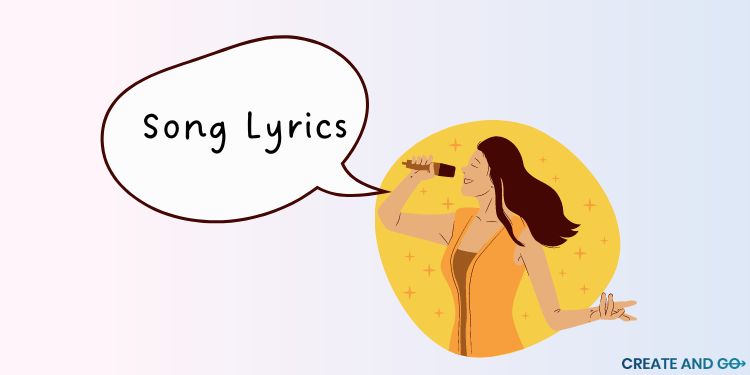Juxtaposition, a literary technique used by writers across multiple genres, often catches readers off-guard, making an otherwise standard narrative suddenly interesting and insightful.
This powerful tool, when expertly wielded, can illuminate contrasts, deepen characterizations, and highlight the intricacies of a plot.
In this article, we’ll explore the juxtaposition definition, use cases, and 28 juxtaposition examples in a variety of contexts. We’ll also share some tips on how you can incorporate this technique into your own writing for maximum effect.
Prepare to dive into a world where the unexpected becomes the norm and ordinary descriptions transform into compelling storytelling.
What is Juxtaposition?

Juxtaposition is a literary technique where two or more ideas, places, characters, or actions are placed side by side in a narrative or a poem for the purpose of developing comparisons and contrasts.
This literary device is widely used in literature to highlight contrasting concepts or profound similarities between the elements involved.
Through juxtaposition, writers can effectively emphasize the contrast between opposing elements, creating a powerful, thought-provoking effect that engages the reader’s emotions and intellect.
Other Literary Devices Like Juxtaposition
There are other literary devices that can be used to create a contrast between elements.
- Irony, for example, involves the use of words or phrases that convey an unexpected meaning or contrast with what is expected.
- Simile and metaphor are both forms of comparison, where two seemingly disparate things are compared in order to produce a vivid image in the reader’s mind.
- Oxymoron is a figure of speech that combines two opposing terms to create a clever paradox.
- Hyperbole is the use of exaggerated language for emphasis or effect.
Finally, litotes is a form of understatement where an affirmative statement is made by using negatives to create emphasis and irony.
When to Use Juxtaposition
Juxtaposition is an effective tool for creating a memorable narrative.
When used properly, it can create powerful visuals and meaningful associations that would otherwise be lost without the comparison of separate elements.
Whether it’s to make readers laugh or to emphasize a change in tone, juxtaposition can be used in many different ways.
Here are some examples of when to use it in writing:
- To emphasize a contrast between two ideas, characters, or situations.
- To create a comedic effect by using unexpected elements.
- To acknowledge the complexity of a certain situation without explicitly stating it.
- To create a surprise element in the narrative.
- To evoke emotion in the reader.
Next, we’ll dive into some juxtaposition examples to help you get a better idea of when and how you can use this literary device.
25 Examples of Juxtaposition
Here are 25 examples of juxtaposition in a variety of different use cases.
Juxtaposition in Literature

Let’s take a look at some juxtaposition in literature to see how this powerful narrative tool can be used to create vivid settings, compelling characters, and even entire worlds.
- Charles Dickens, A Tale of Two Cities
In A Tale of Two Cities, Charles Dickens wrote “It was the best of times, it was the worst of times.”
This opening line of the novel is a classic example of complete opposites which immediately draws the reader in and sets up the dichotomy between each city – Paris and London.
- Ernest Hemingway, The Old Man and the Sea
In The Old Man and the Sea, Ernest Hemingway wrote “Everything about him was old except his eyes and they were the same color as the sea.”
Here, Hemingway cleverly juxtaposes the old man’s physical age with his youthful spirit, emphasizing his resilience despite seemingly insurmountable odds.
- George Orwell, Animal Farm
George Orwell wrote “All animals are equal, but some animals are more equal than others.”
This line juxtaposes the farm’s egalitarian ideals with the oppressive hierarchy that exists in reality – a message that speaks to readers even today.
- John Steinbeck, Of Mice and Men
In Of Mice and Men, John Steinbeck wrote “The best-laid plans of mice and men often go awry.”
This quote juxtaposes the symbolic figures of mice, who are small and helpless, with men, who appear to be powerful but are still subject to fate.
- William Shakespeare, Romeo and Juliet
In Romeo and Juliet, William Shakespeare wrote “My only love sprung from my only hate!”
This quote juxtaposes the two opposing emotions of love and hate in one powerful line, emphasizing the tragic romance between the two protagonists.
Juxtaposition in Poetry

Poetry is an excellent medium for exploring the complexities of juxtaposition.
Let’s take a look at some common examples of juxtaposition in poetry:
- Robert Frost, The Road Not Taken
In “The Road Not Taken” by Robert Frost, the poet writes “Two roads diverged in a wood, … and I took the one less traveled by.”
Through the stark contrast of these two paths, Frost conveys a message about the importance of making difficult decisions and following your own path.
- William Wordsworth, The World Is Too Much With Us
In “The World Is Too Much With Us” by William Wordsworth, the poet wrote “Little we see in Nature that is ours.”
Wordsworth juxtaposes the idea of human ownership with nature’s beauty and power, a timeless message about appreciating the natural world.
- Emily Dickinson, Hope Is the Thing With Feathers
In “Hope Is the Thing With Feathers” by Emmy Dickinson, the poet wrote “Though the way be stormy, it will still survive.”
Here, Dickinson juxtaposes storms with hope in order to convey a message of optimism and strength in hard times.
- Edward Estlin Cummings, I Carry Your Heart With Me
In “I Carry Your Heart with Me” by E.E. Cummings, the poet wrote “i carry your heart with me (i carry it in my heart).”
This quote juxtaposes two seemingly opposite emotions – love and physicality – to emphasize the depth of emotion that can be felt in a relationship.
- Robert Hayden, Those Winter Sundays
In “Those Winter Sundays” by Robert Hayden, the poet writes “No one ever thanked him.”
This simple line juxtaposes the idea of appreciation and gratitude with its absence for an emotional impact that speaks to readers even today.
Juxtaposition in Film

Film is an excellent medium for exploring juxtaposed concepts through visual storytelling.
Let’s take a look at some juxtaposition examples in film:
- The Godfather
In The Godfather, the differences of its main character Michael Corleone’s transformation from an innocent bystander to a ruthless mob boss is masterfully used to evoke emotion in viewers and emphasize the power of corruption.
- The Shawshank Redemption
The Shawshank Redemption tells the story of Andy Dufresne, a man wrongly convicted of murdering his wife.
The juxtaposition between Andy’s hope for a better life and the stark reality of his imprisonment paints a powerful story of resilience.
- The Wizard of Oz
The Wizard of Oz tells the story of Dorothy Gale and her journey to the mythical Land of Oz.
Throughout her adventures, the differences between fantasy and reality is used as a narrative tool to emphasize Dorothy’s longing for home and the importance of friendship.
- Jurassic Park
Jurassic Park tells the story of a theme park populated by dinosaurs created with modern science.
The juxtaposition between the prehistoric creatures and modern technology conveys a message about the power and potential dangers of scientific advancements.
- Forrest Gump
Forrest Gump is a classic example of juxtaposition in film, with its main character’s simple outlook on life being contrasted against the complex nature of life itself.
By placing Forrest’s naive musings against moments of deep insight, director Robert Zemeckis shows how even the simplest person can be profound.
Juxtaposition in Advertising

Highlighting contrast and differences can also be used to create powerful and memorable advertising campaigns.
Let’s take a look at a few examples of juxtaposition in advertising:
- Nike ‘Just Do It’ Campaign
The Nike ‘Just Do It’ campaign is a perfect example of juxtaposition in advertising, with its simple slogan contrasting against the complexity and difficulty of pushing yourself physically.
The message — that greatness takes hard work and perseverance — resonates with viewers even today.
- Apple ‘Think Different’ Campaign
Apple’s ‘Think Different’ campaign highlights the juxtaposed normality of daily life against the potential power of thinking differently.
The campaign conveys a powerful message that creative thought can lead to extraordinary things.
- Coca-Cola ‘Open Happiness’ Campaign
The Coca-Cola ‘Open Happiness’ campaign shares a message of joy and hope contrasting against life’s everyday struggles.
The idea of seeking joy in the little things is a powerful reminder that happiness can be found even in the most difficult situations.
- Burger King ‘Be Your Way’ Campaign
The message in this campaign shares the two elements of individuality and conformity, contrasting individualism against an ever-increasing focus on conformity and sameness in society.
The campaign conveys a powerful message about the importance of staying true to yourself, no matter what others may think.
Juxtaposition in Everyday Life

Let’s take a look at some juxtaposition examples in everyday life that can be used to emphasize ideas, evoke emotions, and more.
- A Vividly Colored Flower Growing Out of Concrete

This is a powerful reminder that beauty can be found even in the most unlikely places.
The contrast between something as vibrant and alive as a flower growing out of something as hard and grey as concrete speaks to the resilience and potential that exists within all of us.
- Contrasting a Thrill Seekers Excitement with a Fearful Reaction
We all experience moments of fear and excitement, but our ideas of what is scary and what is exciting can vary greatly.
The thrill seeker’s enthusiasm juxtaposed with the fearful reaction of someone else over the same situation emphasizes how everyone responds to life’s experiences in their own unique way.
- A Sunset Against an Industrial Landscape
The beautiful colors of a sunset juxtaposed with the harsh lines of industrial structures speaks is a powerful reminder that while industrialization has brought great advances, nature still holds beauty and power that can’t be replicated.
- The Smiling Face of a Child During a Difficult Time
This example of juxtaposition emphasizes the idea that even during challenging times, joy and hope still exist.
The contrast between the tough reality of a difficult situation and the child’s smiling face is an inspiring reminder of the potential for hope and happiness, no matter the circumstances.
Juxtaposition in Song Lyrics

Juxtaposition can also be found in song lyrics, adding an extra layer of emotion and meaning to the words.
Let’s take a look at some examples of juxtaposition in song lyrics:
- Elton John, ‘Tiny Dancer’
In his song “Tiny Dancer”, Elton John writes “Hold me closer tiny dancer.”
This juxtaposes the idea of strength and fragility – a powerful reminder that even the strongest among us need love and support.
- The Beatles, ‘Let It Be’
In their song “Let It Be”, The Beatles write “When I find myself in times of trouble, Mother Mary comes to me.”
Here, the juxtaposed concepts of faith and personal struggle speaks to listeners of all backgrounds.
- Simon & Garfunkel, ‘The Sound of Silence’
In their song “The Sound of Silence”, Simon & Garfunkel write “People talking without speaking.”
This juxtaposes communication and silence to emphasize the power of words when used effectively.
- Bob Dylan, ‘Blowin’ in the Wind’
In his song “Blowin’ in the Wind”, Bob Dylan writes “How many roads must a man walk down before you call him a man?”
This juxtaposes physical and symbolic journeys to emphasize the idea that true strength comes from within.
- The Rolling Stones, ‘(I Can’t Get No) Satisfaction’
In their song “(I Can’t Get No) Satisfaction”, The Rolling Stones write “Try to give me satisfaction but I can’t get no.”
This juxtaposes the idea of happiness and unhappiness to emphasize how difficult it is to find true contentment in life.
How to Use Juxtaposition in Your Writing

Now that you’ve seen some examples of how juxtaposition is used in literature and poetry, let’s look at some tips on how you can incorporate this technique into your own writing.
- Start with an interesting opening line. – This will draw the reader in and create anticipation for the rest of your work.
- Compare two seemingly opposite elements. – By comparing two opposing elements, you can emphasize their differences and illustrate a point in a more effective way.
- Use vivid imagery. – This will help to make the contrasts between the elements stand out even more and create a stronger emotional response from readers.
- Be careful not to overuse juxtaposition. – Too much of this technique can become distracting and take away from the main message of your writing.
By following these tips, you can use juxtaposed ideas in your writing to create powerful visuals, meaningful associations, and memorable narratives that will engage readers.
FAQs About Juxtaposition Examples
Summary of Juxtaposition Examples
Juxtaposition refers to the placement of two or more contrasting elements side by side in order to create contrast and meaning. This technique has been used by writers and poets for centuries and can be seen in various forms, such as song lyrics, literature, and daily life.
When used properly, juxtaposition can create vivid imagery, evoke emotional responses, and provide readers with insight into the narrative or poem.
We hope that these examples and tips have given you a better understanding of how to use juxtaposed ideas in your writing.
Writing is a creative art form, so don’t forget to experiment with a variety of literary devices to find the one that best suits your writing style. With practice, you’ll be able to use this technique effectively and make your stories even more dynamic. Good luck!